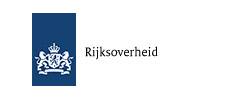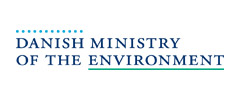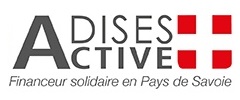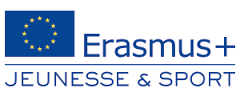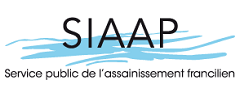REACH - Eliminating Toxic Chemicals in the EU
Working to ensure that by 2020 all consumer products are free of hazardous chemicals
| WECF Campaign
| Countries: | EU |
| Donors: | European Commission, DG Environment; Ministry of Housing Spatial Planning and the Environment (VROM), The Netherlands |
| Partners: | WEN, Deutscher Hausfrauenbund, EWMD, BUND, Greenpeace, EEB, ZijActief |
| Issues: | Chemicals & Health |
| Duration: | 01/2004 - 12/2006 |
WECF is concerned about chemicals. We are concerned about the chemicals that we are exposed to everywhere, every day, without our knowledge: in the shower, in front of the computer, in the kitchen and in the workplace. These chemicals are polluting our air, rivers, seas and wildlife.
To date, up to 300 chemicals have been detected in the human body alone. These chemicals are passed on by each generation, directly from mother to child. Alarmingly, of the 100 000 chemicals on the European market, only 14% have ever been tested for their health and environment effects. This is an unacceptable regulatory gap.
As women, we are differently affected by hazardous chemicals. This does not only concern women’s health in general, but also women’s reproductive health and the healthy development of future generations. In 2006, we published the first international brochure written by women for women, on hazardous chemicals in our daily environment.
“Women and their toxic world” examines how women’s lives and that of future generations are threatened by hazardous chemicals, why strong chemicals policies are needed to end this threat and what women can do to protect themselves and future generations.
- Download the brochure Women and Their Toxic World
- Download the updated brochure text following the adoption of the new EU chemicals policy REACH
The WECF vision is that by 2020 all hazardous chemicals are phased out of everyday consumer products. In order to make consumer products safe, any chemicals policy must have these chemicals policy principles at heart:
- the precautionary principle
- the substitution principle
- the polluter-pays principle
- the public’s right to know
REACH- the new EU chemicals legislation
Over the last few years, WECF has lobbied intensively for a new EU chemicals policy. The new EU chemicals policy, called REACH, was necessary because little is known about more than 100 000 chemicals on the EU market. As a result hazardous chemicals find a widespread application in everyday consumer products, even if they are known to cause a variety of serious and irreversible health effects.
Following years of tough negotiations and unprecedented industry pressure REACH was finally adopted in December 2006 by the European Parliament and EU member states. REACH stands for Registration, Evaluation and Authorisation of Chemicals and has entered into force in June 2007.
While REACH is certainly an important step towards a toxic-free future, WECF is very concerned about the many loopholes in the final text. Therefore, we question the effectiveness of REACH in terms of its capacity to protect women and future generations from hazardous chemicals in their everyday lives.
Find out more about WECF’s assessment of REACH from this in the BBC interview with WECF policy coordinator, Daniela Rosche.
For more information about the new chemicals law you can also consult the NGO REACH guide for consumers, My Voice. A more detailed analysis of REACH is given in the activist guide to REACH Navigating REACH.
Policy corner
- More about REACH
- NGO Media Advisory REACH entry into force, May 2007
- NGO Open Letter to European Commission concerning the loopholes in REACH and entry into force, May 2007
- WECF letter to Commission President Barroso
Request for an internal review of the EU Commission workings concerning the selection of the Executive Director for the European Chemicals Agency, September 2007.
Substitution under REACH: will it make consumer products safer?
One of the key indicators of the effectiveness of REACH will be the substitution of hazardous chemicals in the Authorization procedure. A list of hazardous chemicals that will need to be substituted by safer alternative is expected to be available from the website of the new European Chemicals Agency (ECHA) as early as fall 2008.
Nevertheless it is important that consumers start asking companies and retailers now about hazardous chemicals in everyday consumer products. The new WECF pocket size guide tells consumers how to shop for toxic free products and which chemicals to watch out for.
Download the WECF shoppers guide.
It is important for companies and producers of consumer goods to know, which chemicals the public is especially concerned about. WECF is part of a joint NGO project that aims at putting together a list of chemicals that should no longer be used in consumer products. Find out more about this project and watch out for a release of the NGO chemicals “blacklist” in 2008.
In the meantime, find out from these websites below, which companies are leading the toxic-free future:
Chemicals in the household
For an overview of a selection of chemicals in the home and what companies are doing to substitute hazardous chemicals, read the Greenpeace progress report. More in the “Substitute with Style” report.
Cosmetics
Safer cosmetics campaign in the US.
Greenpeace guide to safer cosmetics “Mooi”
Electronics
Greenpeace Electronics Ranking
EU Pesticides Legislation
Despite existing legislation pesticides are still in widespread use in the EU. Because of their inherent toxicity to humans and the environment, WECF is concerned with how they are regulated. Especially women and future generations bear the burden of contamination and disease stemming from hazardous chemicals in food, air, water and soil.
Since 2006, the EU is working to reform its pesticides legislation in the form of a Thematic Strategy on Sustainable Use of Pesticides. The Thematic Strategy sets out the direction for regulating and reducing the use of pesticides in the EU in a so-called Framework Directive.
Following the release of the draft legislation by the European Parliament in 2006, the members of the European Parliament’s Environment Committee (ENVI) have been discussing the new legislation. In October MEPs conclude their first round of deliberations with a plenary vote.
The outcomes of the vote are only partly positive from a women’s standpoint, because the EP failed to adopt mandatory reduction targets for the use of pesticides in the Union.
In the coming months EU member states will be discussing their position on the new EU pesticides legislation proposals. A first draft opinion by EU member states is expected to be presented by mid 2008.
Policy Corner:
- WECF supports PAN Europe demands for the new EU pesticides legislation
- Letter of WECF members and partners to the EP’s Committee on Women’s Rights and Gender Equality (FEMM) expressing their demands for the first reading plenary vote, October 2007
Toxic chemicals and children’s health
Children clearly bear the highest burden of disease and contamination when it comes to hazardous chemicals because they are far more vulnerable than adults to their negative health effects. The contamination of the child with hazardous chemicals starts in the womb.
While the placenta does an excellent job of protecting the foetus from other health factors like harmful bacteria, it is no barrier to many toxic chemicals. Small, neutrally charged molecules which easily dissolve in fat simply pass through. Hazardous chemicals can attach themselves to such molecules and so pass through the placenta without any obstruction.
The chemicals a child receives from its mother, via the placenta and later through breastmilk, are in turn stored in the child’s body, where they disturb the child’s development. In addition, the vulnerability of children continues throughout their development because, compared to adults, they eat, drink and breathe more in relation to their body weight.
This means that their relative intake of hazardous chemicals from air and food is higher. Associated long-term health effects are learning disabilities, attention deficits, allergies, asthma, cancer and reproductive disorders. Many of those health effects may only become visible once the child has reached puberty or adulthood.
Policy Corner:
- Bringing the chemicals issue closer to citizens in the new EU member states was the theme of a joint workshop held by WECF and our partner the Health and Environment Alliance (HEAL) in April 2006, in Bratislava, Slovakia.
Related News
10 years ago today: our push for safe toys in the European Parliament
02.09.2018
Crossing the European Parliament Red Lines
European Commission TTIP proposal endangers public health, environment and democracy
07.07.2016
NGOs urge REACH Committee to vote for better protection of European citizens
Nine NGOs urge the REACH Committee members in their letter to support the identification of four phthalates (DEHP, DBP, BBP and DIBP) as endocrine disrupting chemicals and to reject the authorisation for the use of DEHP in recycled consumer articles.
14.03.2016
Textiles : Stop the chemical overdose!
Towards more coherent and transparent rules for textiles in EU and beyond for better protection of workers, consumers and the environment
31.10.2013 | WECF
France finalizing plans for a national EDC strategy
A draft strategy is expected to be presented, although many NGOs fear it to bee not ambitious enough and under-financed
03.06.2013 | Chemical Watch
Sweden’s new actions on regulating EDCs and BPA should be a model for the Rest of Europe
Exposure to toxic EDCs such as BPA can happen from many sources, which is why a comprehensive strategy has to be developed. Sweden has taken first steps towards this goal.
03.06.2013 | WECF
WECF signs position paper pushing for third party participation in the REACH Authorisation process
To ensure to replace SVHC with their saver alternatives, third parties should be allowed access to the Authorisation process of REACH
03.04.2013 | WECF
626 hazardous substances of which 488 are still legal
ChemSec updates its SIN list to contain 626 hazardous chemicals of which 138 are on the REACH candidate list
26.02.2013 | ChemSec
Research from CIEL links tighter chemical regulation to market innovation
CIEL has published a report on the positive and unexpected effects of chemical regulations which are usually seen as a burden by the chemical industry
14.02.2013 | WECF
World Cancer Day 2013
What if prevention was the cure?
04.02.2013 | WECF
France: the new champion for EDC regulation in Europe?
France bans BPA in food packaging
14.12.2012 | WECF
‘Goed gebruik van REACH': om “gezonde” keuzes te kunnen maken
Om burgers de kans te geven zich te informeren is WECF onlangs van start gegaan met het project ‘Goed gebruik van REACH – van ECHA tot Winkelier tot Burger’
06.09.2012 | Project WECF Nederland
Denmark bans 4 phthalates from consumer products
After banning Bisphenol A in children's food containers and two parabens in children cosmetics, Denmark proves once again a frontrunner among EU Member States in the phase out and substitution of endocrine disrupters
24.08.2012 | Elizabeth Ruffinengo
Werkervaring opdoen bij een internationale NGO op het gebied van gezondheid en milieu?
Women in Europe for a Common Future (WECF) zoekt een gemotiveerde stagiair(e) voor het project ‘Goed gebruik van REACH – van ECHA tot Winkelier tot Burger’
21.08.2012 | WECF
Daily chemical exposure adds to obesity and diabetes risk
A scientific review of more than 240 papers published today by CHEM Trust provides new urgency for banning certain chemicals to protect health
20.03.2012 | WECF & HEAL
International Trade of hazardous chemicals and pesticides
WECF position on the Commission proposal to recast of PIC Regulation
20.12.2011 | WECF
WECF zette agenda voor klankbordbijeenkomst REACH: Nieuwe chemie en de consument
Tweemaal per jaar komen overheid, industrie, bedrijfsleven en het maatschappelijk middenveld bij elkaar om te praten over de REACH chemicaliën wetgeving van de EU. Bedoeld om innovatie te stimuleren en gezondheid te verbeteren, stelt REACH allerlei voorwaarden aan het gebruik van (schadelijke) chemicaliën.
22.04.2011 | Chantal van den Bossche
Toxic Chemicals Found in Nearly All Pregnant U.S. Women
The bodies of virtually all pregnant women across the United States carry multiple toxic chemicals
01.03.2011 | Environment News Service (ENS)
Toys symposium in Paris: a new start for SAFER TOYS - WECF invited main actors EU, consumer associations, NGO’s and toy industry for debate on security toys
Colloque Jouets WECF : un nouvel envol pour des jouets plus sains. Tout un panel d’acteurs réunis autour de la question de la sécurité des jouets
22.11.2010 | WECF France Press Release
WECF Conference in Paris: Toys and hazardous chemicals - exploring solutions
REACH and the substitution of chemicals of concern: consumer protection, good practices and incentive measures
11.11.2010 | WECF news
EEB report reveals reveals big retailers are breaching the EU’s flagship regulation on chemicals
WECF took part in European wide test under the guidance of the European Environmental Bureau to see whether big retailers are adequately protecting consumer safety
13.10.2010
Big retailers caught breaching EU chemicals law
A report released today reveals big retailers are breaching the EU’s flagship regulation on chemicals, while many products such as school supplies, sport accessories and sex toys are shown to contain high concentrations of ‘substances of very high concern’.
13.10.2010 | Joint Press Release
European Parliament fails to protect consumers and the environment from biocides
New European system concerning the authorisation and marketing of biocides for household and other uses has been set in European Parliament
22.09.2010 | JOINT PRESS RELEASE
British women's breasts getting bigger
The average bra size has expanded from 34B to 36D
22.08.2010 | The Guardian
First REACH hazardous chemicals list is a drop in the ocean
The first-ever list of 15 hazardous chemicals released this week by the European Chemicals Agency (ECHA) is a welcome start, but it's a drop in the ocean when compared to the hundreds of well-known dangerous substances present in products used every day
29.10.2008 | Joint Press Release coalition of NGO's
Conflict at Rotterdam Convention meeting in Rome
A handful of asbestos and endosulfan producing states denying the right to information for other countries
28.10.2008 | Coalition of NGO's
Environmental factors increase breast cancer risk! WECF launches Dutch Brochure
WECF, Platform Gezondheid en Milieu, Vrouw en Milieu and Ecobaby have launched Dutch brochure on Breast Cancer and the Evironment
17.10.2008 | WECF Press Release
Report on WECF lunch event at European Parliament on developmental harm of children
Europe's children’s brains and reproductive organs are at risk from hazardous chemicals if European Parliament does not improve proposed legislation on pesticides, toys, cosmetics and chemicals
09.10.2008 | Chantal van den Bossche
Consumers need information about most hazardous chemicals in products
NGOs present REACH "SIN" (Substitute It Now) list of most hazardous chemicals which consumers should be able to avoid under European chemicals regulation REACH
16.09.2008 | WECF Press Release
Development of the SAICM process
Report of 3rd EU-JUSSCANNZ meeting in Paris 12 Feb 08
18.02.2008 | Sonja Haider
REACH - Eliminating Toxic Chemicals in the EU
Working to ensure that by 2020 all consumer products are free of hazardous chemicals
01.04.2004 | WECF Campaign















